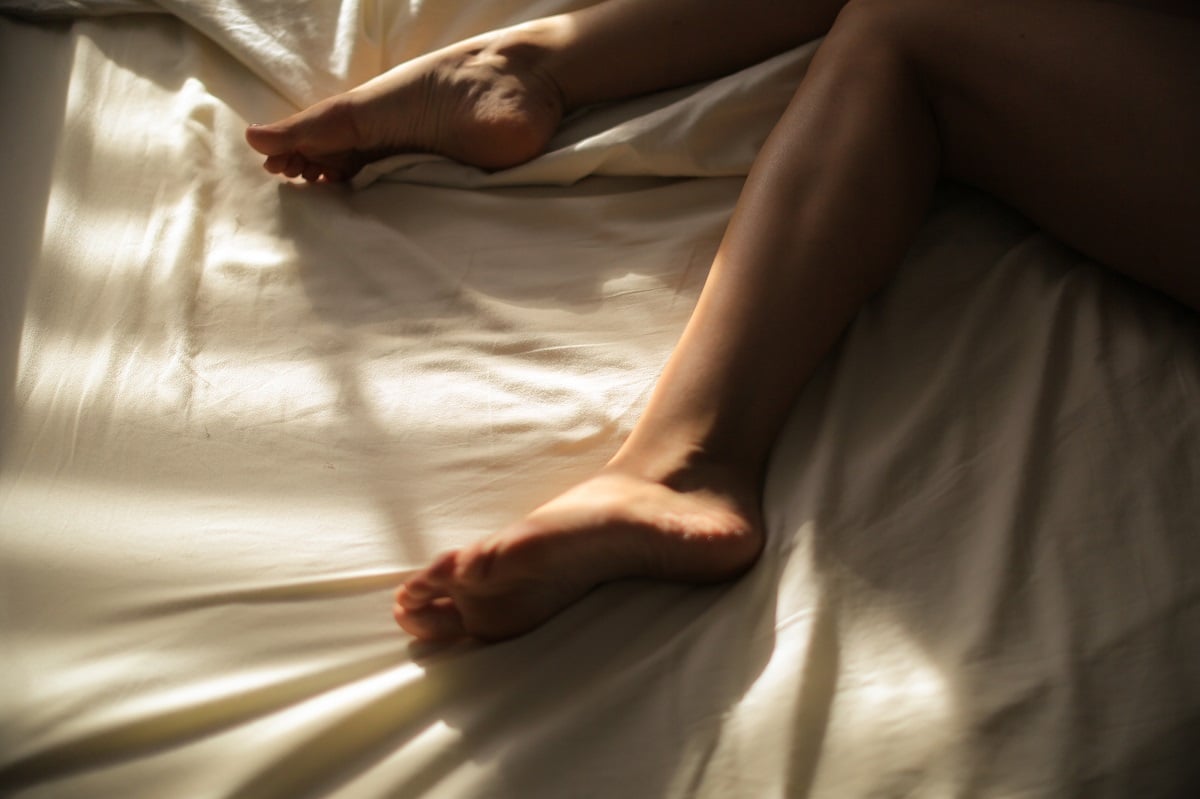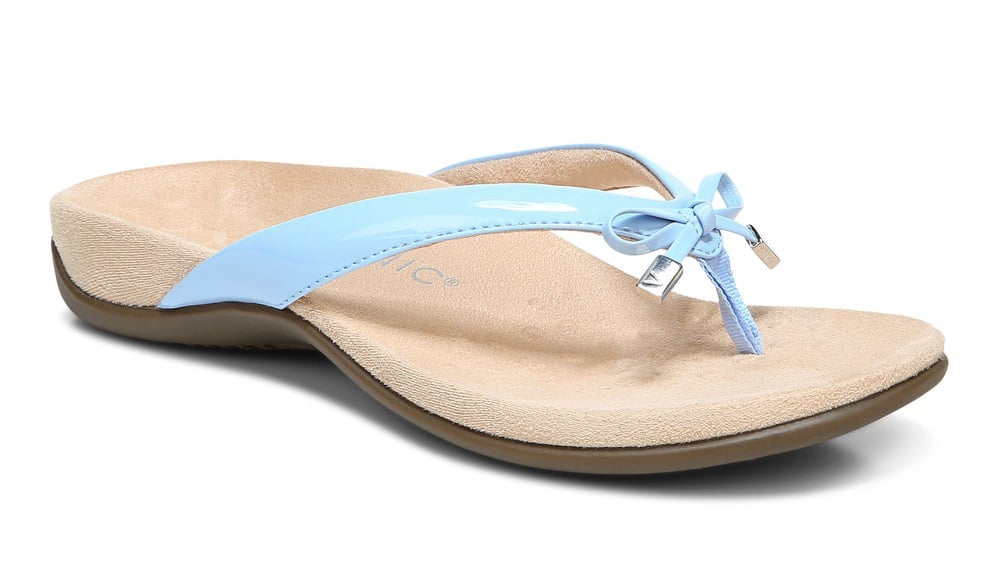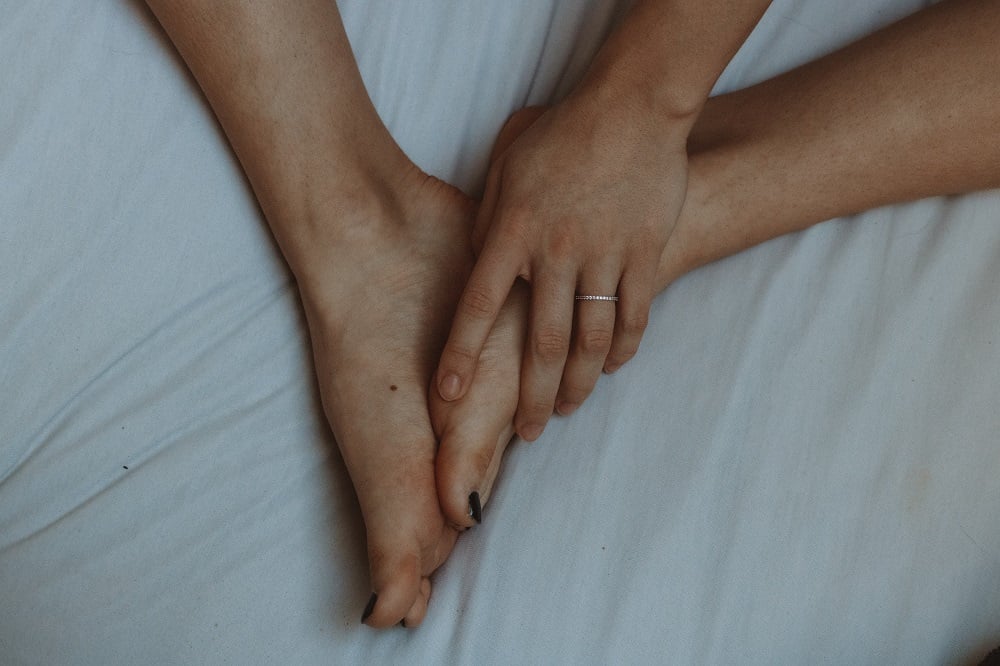
Composed of 26 bones, 33 joints, 112 ligaments, and a network of tendons, our feet are more than meets the eye.1 They’re true feats of biomechanics. We depend on our feet to carry us through our daily lives, whether we’re running to the grocery store or running to home base during a Saturday kickball game. That’s why when foot issues start to make movement difficult, you may wonder, do I need a podiatrist?
One of the first things a podiatrist might recommend is adding supportive shoes to your wardrobe. Whether you’re looking for stylish shoes for men or work shoes for women, Vionic can transform your closet and your feet.
Knowing when to see a podiatrist is key but an orthopedist might be the right route to go instead. A podiatrist vs orthopedist has some overlap but they are distinctly different. In this guide we’ll focus on podiatry and we’ll list the top 10 signs you need to make an appointment with a podiatrist, as well as discuss how these foot professionals can help you get back on your feet (pun intended).
#1 Pain While Walking
It can be hard to determine when to see a podiatrist for foot pain. Were you simply walking more than usual, or are you breaking in a new pair of shoes? In these instances, resting those dogs or bribing your partner for a foot massage may be a sufficient solution.
However, if you notice persistent foot pain, particularly on the bottom of your heel, you should consider contacting a podiatrist.
Plantar fasciitis is the most common cause of heel pain, with approximately 2 million patients treated yearly for this condition.2 The plantar fascia is a ligament that connects your heel and the front of your foot, supporting your foot’s arch. When too much pressure damages the ligament, you’re left with inflammation, stiffness, and heel pain. While there’s no singular cause for plantar fasciitis to develop, factors that may increase your risk include:
- Tight calf muscles that make it difficult to flex your foot
- High arches
- Repetitive high-impact activity (such as running)
- Obesity
By seeing a podiatrist, you can determine whether plantar fasciitis is causing your heel pain and learn the best course of treatment for alleviating your pain. For mild cases, treatment can include anti-inflammatory medication, cortisone injections, and supportive shoes, such as Vionic’s specifically designed plantar fasciitis style shoes that offer additional arch support, as well as increased stability and cushioning.
#2 Persistent Ankle Pain
You may not consider your ankle pain a foot issue, but your podiatrist does. If you’re experiencing persistent ankle pain, you should make an appointment with your foot professional, as this may be a sign of arthritis.
Osteoarthritis (the most common type of arthritis) occurs when the smooth cartilage that protects your joints wears down, causing your bones to rub against each other. This condition affects the feet of 1 in 6 people over the age of 50.3
Persistent ankle pain may also point to rheumatoid arthritis—an inflammatory autoimmune disease that attacks healthy joint tissue. In about 20% of cases of rheumatoid arthritis, foot and ankle pain are among the first signs of disease.3
Fortunately, with a podiatrist’s diagnosis, you can work to reduce ankle joint inflammation and pain with medication, steroid injections, and supportive footwear. In fact, Vionic’s arch support, heel cups, and shock absorption can significantly reduce arthritic joint pain.
#3 Numbness or Decreased Feet Sensation
We all occasionally experience the uncomfortable, pins-and-needles sensation that occurs when we sit cross-legged for too long. Sometimes it can be the result of poor circulation and you might need some tips on how to improve circulation in feet. But if you’re experiencing persistent numbness, or if you’re having trouble feeling sensations in your feet on a regular basis, the issue may be more than pretzel-ed limbs.
Your numbness may be due to peripheral neuropathy—a condition that results from damaged nerves and can lead to numbness on the bottom of the feet, the top of the feet, the toes, or the legs. In the U.S. the most common cause of peripheral neuropathy is diabetes, as both type 1 and type 2 diabetes can reduce blood flow to your lower extremities and cause nerve damage.4 In fact, those who suffer from diabetes should visit their podiatrist at least once a year due to their increased risk of foot problems.5
However, persistent numbness could also be a sign of:
- A thyroid disorder
- Rheumatoid arthritis
- Alcohol abuse
- Nerve entrapment at the spinal cord
By understanding the underlying cause of your numbness, your podiatrist can recommend the best course of treatment to promote increased sensation in your feet and prevent the condition from worsening.
#4 A Sore That Won’t Heal
When sores on your feet aren’t healing, they remain at risk of infection. When it comes to your feet, infected sores can increase the likelihood of osteomyelitis—an infection of the bone. This is because the skin covering your feet is extremely thin, and lies closer to the bone than the skin on other areas of your body.
If you notice sores on your feet aren’t healing properly, contact your podiatrist. With a thorough examination, your podiatrist can:
- Determine if an underlying issue, such as diabetes, is preventing your sores from healing
- Prescribe antibiotics to treat any present infections
#5 Swollen Feet
While occasional foot swelling is normal, particularly after walking or standing for long periods of time, frequent instances of swollen feet may be a sign of an underlying condition, such as:6
- Venous insufficiency – A condition wherein the valves in the leg veins become weak, allowing gravity to pull blood down into the feet.
- Phlebitis – An inflammation of the leg veins.
- Deep-vein thrombosis – A condition that causes blood clots to form in the veins of the legs.
- Liver disease – In some cases of liver disease, low levels of albumin causes fluids in the blood to pass into the tissues.
- Kidney disease – If your kidneys aren’t able to rid your body of excess fluids properly, these fluids may build up in your tissues and cause swelling.
#6 Uncomfortable Corns or Calluses
Although corns and calluses are generally not a cause for concern, they often drive people to their podiatrists. Why? Because over time, the areas of built-up skin that form corns and calluses can become uncomfortable and turn walking into a painful experience. Corns and calluses often develop when:
- Excess pressure is placed on one area of the foot – This can occur if you regularly strut in heels, which increases pressure on the ball of your foot.
- Something rubs against an area of the foot repeatedly – This may happen if your shoes are too snug and the fabric rubs against the outside of your big toe.
To alleviate your pain, your podiatrist may suggest cortisone injections or removal of the built-up skin. After treatment, consider your footwear and the role it may have played in the development of your corns and calluses. You might want to treat your feet to a little TLC with a pair of Vionic’s supportive, yet stylish orthopedic shoes.
#7 Painful Bunions
A bunion refers to a bump at the base of the big toe that forms when the bone or tissue at the joint moves out of place. When this happens, the big toe bends inward toward its fellow piggies. If left untreated, bunions can become worse over time, as this joint in particular is responsible for carrying a significant portion of your weight.
To treat a bunion, your podiatrist may recommend padding or taping the area, taking medication, or in severe cases, undergoing surgery to remove the bunion entirely.
#8 Stubborn Athlete’s Foot
Athletes depend on their feet to carry them across fields, propel them through water, and launch them to new heights (literally and figuratively). But if feet become sweaty inside of dark, tight-fitting shoes, athlete’s foot can develop.
This fungal infection causes the skin between the toes to become inflamed, itchy, and scaly. While over-the-counter creams are available for treatment, more stubborn cases of athlete’s foot require a visit to the podiatrist.
To treat the infection and provide much-needed relief, your podiatrist can prescribe powerful creams and oral medications.
#9 Toenail Issues
If the corner of your toenail digs into the soft tissue of your big toe, it leads to what’s known as an ingrown nail. Ingrown toenails are more than uncomfortable—they can cause redness, irritation, swelling, and can even lead to infection. While you may feel tempted to try to tackle your toe issues at home with a pair of nail clippers, it’s safer to seek professional assistance.
Your podiatrist can remove the ingrown portion of your nail and prescribe medication to help prevent infection.
#10 You Haven’t Yet
Even if you have healthy feet, it’s worth taking a stroll over to your local podiatrist to receive an examination. This can help prevent foot, ankle, and nail problems before they become a more painful issue.
Your podiatrist can also provide you with helpful foot care advice and recommend the best shoes and insoles to carry and cushion your hard-working feet.

Carry, Cushion, and Console Your Feet with Vionic
By understanding when to see a podiatrist, you can stay one step ahead of your foot health. This means ensuring you can walk, skip, run, dance—move however you want—with comfort for years to come.
Looking for even greater support?
Vionic’s line of innovative footwear offers arch support, stability, and cushioning without sacrificing style. Choose from sneakers, sandals, flats, and even heels, all available in a variety of colors, patterns, and styles.
You depend on your feet to support you. Isn’t it time you supported them? You can with Vionic.
Sources:
- “Running And Your Feet”. American Academy Of Podiatric Sports Medicine. http://www.aapsm.org/running.html
- “Plantar Fasciitis and Bone Spurs”. OrthoInfo. https://orthoinfo.aaos.org/en/diseases–conditions/plantar-fasciitis-and-bone-spurs
- Creaky Joints. How Arthritis Strikes Your Feet, and 11 Ways to Heal Your Arthritis Foot Pain. https://creakyjoints.org/symptoms/arthritis-foot-pain/#:~:text=Indeed%2C%20osteoarthritis%20(OA)%2C,the%20cause%20of%20the%20 disease.
- Certified Foot & Ankle Specialists, LLC. Foot Numbness – Symptoms, Causes & Treatments. https://certifiedfoot.com/services/foot-numbness/
- Amy Rushlow. “10 Reasons to See a Podiatrist”. Healthgrades. Updated on April 11, 2021, https://www.healthgrades.com/right-care/foot-health/10-reasons-to-see-a-podiatrist
- “What’s causing those swollen feet?”. Harvard Health Publishing. November 1, 2018, https://www.health.harvard.edu/diseases-and-conditions/whats-causing-those-swollen-feet



Leave a Reply